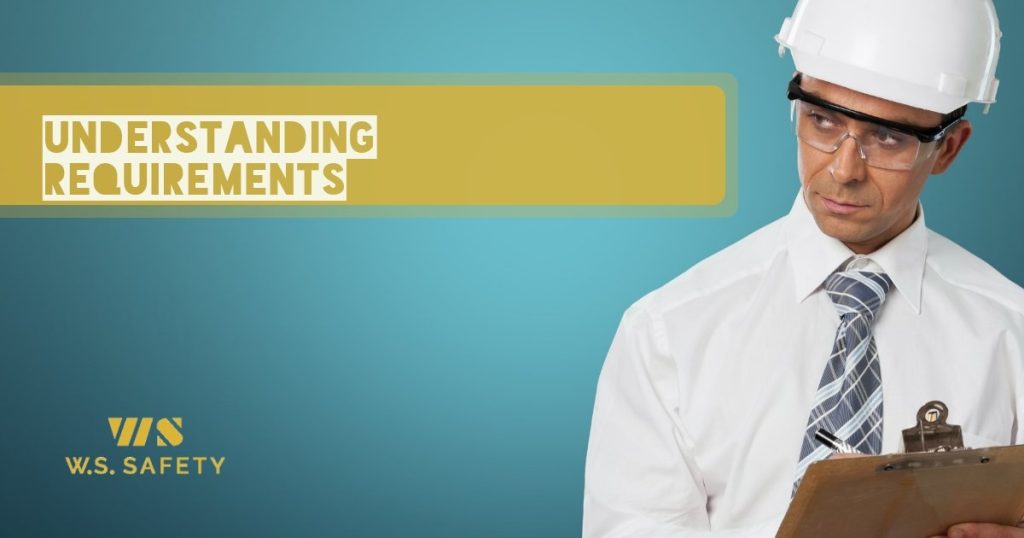You have a list of daily tasks. As an Operations Manager, Business Owner, Project Manager or Consultant this keeps you busy. On top of that, you have fall protection regulations and other such requirements to follow. This may seem like a lot, but when you are hiring contractors, safety is a top priority. Safety is a requirement.
A company in Mississauga, Ontario got hit hard on safety. In May 2016 a worker came into the building and worked on the electrical wiring on the office ceiling. In the process, the worker fell off the ladder and onto the floor suffering critical injuries. The Justice of the Peace settled this court case in April 2018. According to the Ministry of Labour Court Bulletin, she fined the company $90,000 for failing to provide the appropriate equipment to the worker. This fine, then, came through the provincial governing body in Ontario, called the “Ministry of Labour.”
We are trying to make these requirements as easy to understand as possible in a 3 part series. This article is the introduction. By the end of reading this article, you should have a better understanding about where to go to find specific requirements.
Does the Occupational Safety and Health Administration (OSHA) Apply in Canada?
You may have seen the term OSHA compliant when looking into roof safety systems such as guardrails, roof hatch protection, elevated mezzanine guardrail heights, control zones or even Personal Fall Arrest Systems (PFAS). OSHA is a common set of regulations for businesses and employers in the US and stands for the Occupational Safety and Health Administration.
Many times, organizations in Canada will start by searching for a fall protection “code”. In Canada, there is not an all-encompassing national code such as the OSHA fall protection requirements. While OSHA regulations are commonly referenced in Canada, Canada has its own set of regulations.
Where Can I Find My Governing Fall Protection Regulations?
The two governing bodies required by law in Canada are the following:
- Federal regulations (one body)
- Provincial or territorial employment standards (13 bodies representing each province/territory)
A further governing body that affects employees is their union, if the employees are unionized.
All provinces and territories in Canada have an act with a name such as the Occupational Health and Safety Act (OHSA) or a similar name. If your workplace falls under the federal jurisdiction due to your type of work or your type of projects, the federal government has its own set of regulations. If your job entails work in a variety of sectors, then you may at times need to follow both your local provincial/territorial regulations and the federal regulations based upon your type of work, along with some company specific safety requirements that may be to an even higher standard or safety requirement. If you are unsure about what jurisdiction is pertinent to your workplace, the Canada Business Network has provided a list on their website.
If a customer has a rooftop gas fired unit, or elevator access, these areas fall under the jurisdiction of the TSSA, which has specific regulations to safely protect these areas, and must be complied with.
MOL Safety Requirements for Rooftop Safety
In October and November of 2017 the Ministry of Labour inspectors visited 1,442 workplaces in a cross-sector enforcement blitz through Safe at Work Ontario. When they inspected the construction segment, they issued 1,574 orders and requirements. Of these orders, one of the most frequently issued orders was “Failure to use an adequate guardrail or an adequate protective covering… to prevent a worker from falling through an opening on a work surface.” 33 orders were related to this. One of their observations was that “Of the most frequently issued orders, the ones ranking second, third, fourth, and seventh were related to fall protection.” “Fall protection” and “preventing a worker from falling through an opening on a work surface” could both be applied to working on the roof.
Knowing how to work safely yourself is one thing, but promoting safe practices throughout your company is another thing. No one wants a lawsuit for failing to provide proper equipment to a worker, be it on the part of the Manager or on the part of the Supervisor or anyone else. It’s not just financial ramifications, there’s also possible jail time for any supervisors involved, and the regrets knowing your lack of safely managing a crew might have led to an accident or fatality.
How Can You Promote a Culture of Safety in Your Organization?
One organization that promoted a safety culture effectively is Deep Foundations Contractors Inc. In 2016 they beat the status quo and won a national award from the Canadian Construction Association (CCA).
Deep Foundations established solutions and still continued to be dedicated to their culture of safety. This award winning company has a 2:08 minute video giving practical ideas for implementing a culture of safety.
Here is one practical idea they had. A few years ago they organized an annual safety week. Their week included activities such as the distribution of a safety handbook to all employees, safety week T-shirts and a safety committee meeting. They then finished their Thursday afternoon with a company wide BBQ and had a talk on the last day about Deep Foundation’s Values.
Conclusion
Requirements can seem hard to understand at the beginning, but there is not an infinite number of them. The US has their overarching OSHA and Canada has its federal regulations and its provincial/territorial ones. In Ontario, there is Safe at Work which conducts periodic blitzes on workplaces to give orders if they are not following the regulations. Safety does not have to be threatening, just like Deep Foundations demonstrates. Creating a culture of safety could even win you an award.
Stay tuned for the next article in this series which will focus specifically on rooftop safety requirements in Canada.
This article is based on the research and opinion of the writer and should not be used as legal advice.


